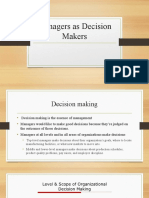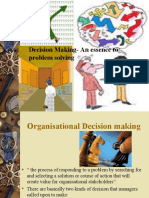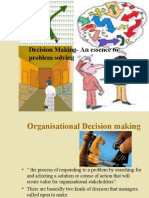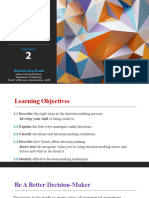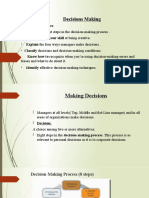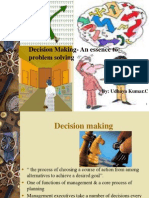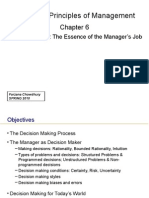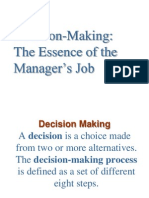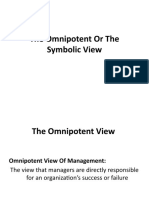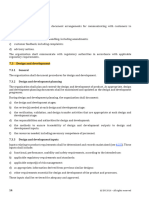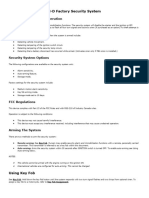0% found this document useful (0 votes)
40 views17 pagesThe Decision-Making Process
The document outlines the 8 step decision making process as follows: 1) Identify the problem, 2) Identify decision criteria, 3) Allocate weights to criteria, 4) Develop alternatives, 5) Analyze alternatives, 6) Select the best alternative, 7) Implement the alternative, 8) Evaluate the decision effectiveness. It provides an example of a manager deciding on new laptop computers for sales reps to illustrate these steps.
Uploaded by
Zunaira TauqeerCopyright
© © All Rights Reserved
We take content rights seriously. If you suspect this is your content, claim it here.
Available Formats
Download as PPTX, PDF, TXT or read online on Scribd
0% found this document useful (0 votes)
40 views17 pagesThe Decision-Making Process
The document outlines the 8 step decision making process as follows: 1) Identify the problem, 2) Identify decision criteria, 3) Allocate weights to criteria, 4) Develop alternatives, 5) Analyze alternatives, 6) Select the best alternative, 7) Implement the alternative, 8) Evaluate the decision effectiveness. It provides an example of a manager deciding on new laptop computers for sales reps to illustrate these steps.
Uploaded by
Zunaira TauqeerCopyright
© © All Rights Reserved
We take content rights seriously. If you suspect this is your content, claim it here.
Available Formats
Download as PPTX, PDF, TXT or read online on Scribd
/ 17











